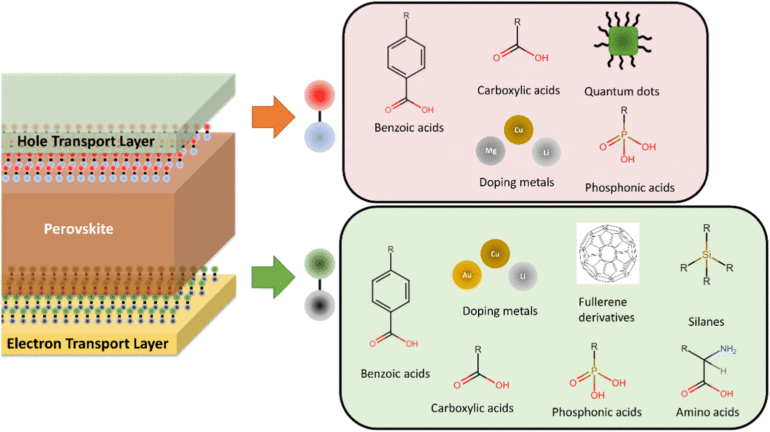A team of researchers led by Center for Hybrid and Organic Solar Energy (CHOSE), Electronic Engineering Department at Tor Vergata University of Rome has developed the first air-stable lead (Pb) and tin (Sn)-free perovskite solar modules, fabricated with an antimony (Sb)-based perovskite-inspired material (PIM) as the light absorber. The results are published in the journal ACS Energy Letters.
“The Sb-based perovskite-inspired material photovoltaic cells we developed aim to solve a main issue with perovskite technology, that of the potential toxicity of Pb, as well as offer alternatives to Sn-based perovskites, which are unstable, and thus difficult to process in air,” the research group said.
Two cations in the precursor mixture were introduced that not only improved power conversion efficiencies (PCE = 1.5%) of Sb-based MA1.5Cs1.5Sb2I3Cl6solar cells by 81% compared to conventional Cs-only counterparts, but also boosted long-term stability by 60%, with a loss of only 10% after ∼1,800 h of aging in air.
Such a positive stability behavior in air, accompanied by a thermal durability of hundreds of hours at high temperatures of 85°C in air, also enabled the researchers to carry out all three scalable P1, P2, and P3 laser patterning steps in air, which is required to manufacture a PV module. This enables laser equipment used for module patterning and manufacturing to be placed outside the glovebox simplifying the process as well as its cost.
Future studies will be focused on increasing efficiencies of these types of cells. “This study reveals new potentialities for large-scale production of potentially greener photovoltaics,” the research group said.
More information:
Jie Xu et al, Air-Stable Lead-Free Antimony-Based Perovskite Inspired Solar Cells and Modules, ACS Energy Letters (2024). DOI: 10.1021/acsenergylett.3c02409
Provided by
Tor Vergata University of Rome
Citation:
Perovskite solar cell technology goes greener with antinomy (2024, February 14)



